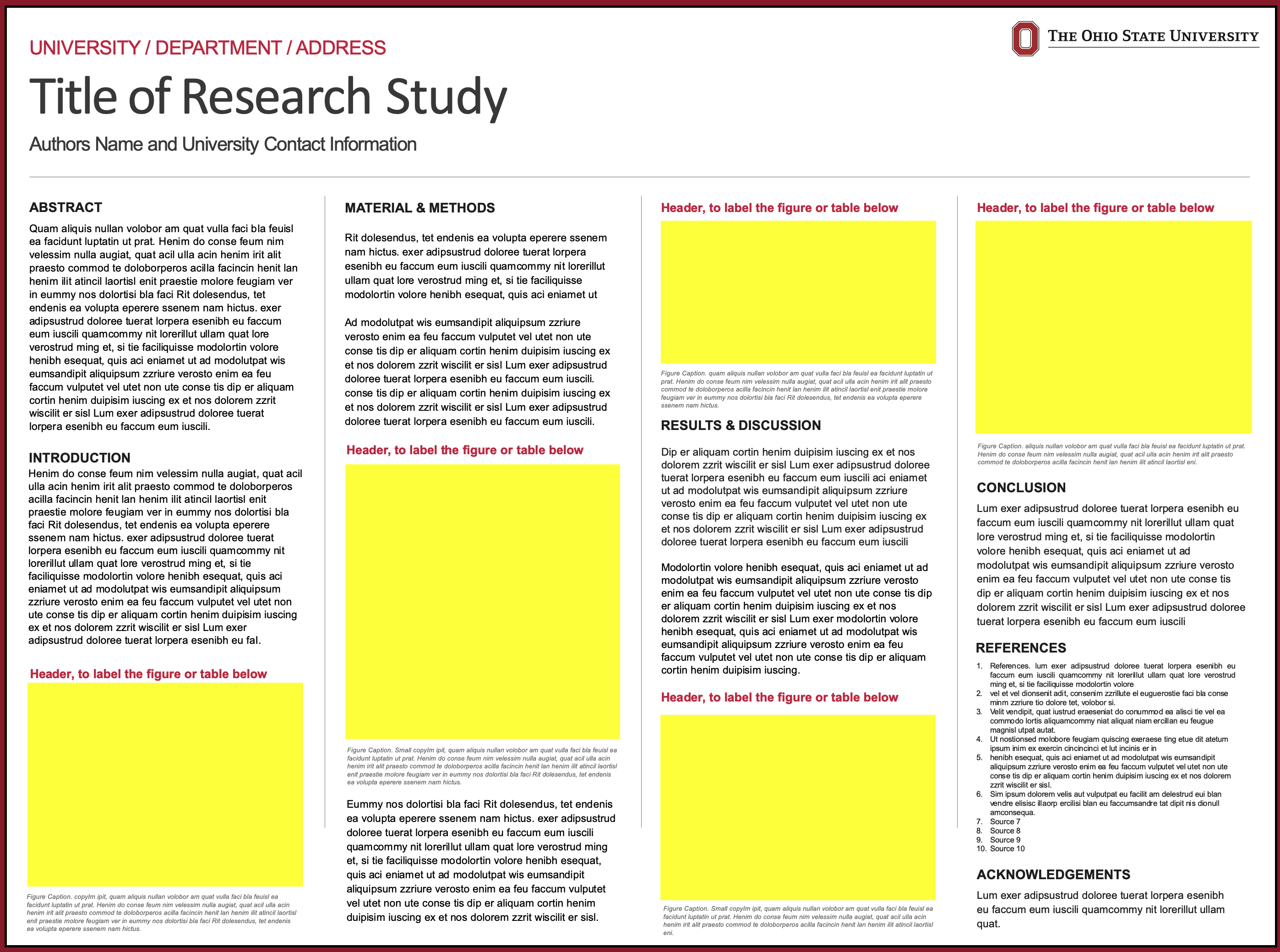Complete Poster
Characteristics of a Complete Poster
- The poster itself should be written so that an audience can understand every part of the poster without needing the author to explain it.
- Simple and clean design, organized, easy to read for a person standing 3-feet (1 meter) away from the poster.
- Contains Title, Author Names and Contact Information, Abstract, Introduction, Materials & Methods, Results, Discussion, Figures, Tables, References and Acknowledgements.
A complete poster should contain all the necessary parts and looks similar to Figure 9. Notice the order that each section appears in the poster with the Title, Authors and Abstract appearing first, followed by Introduction, Materials & Methods, Results & Discussion, Conclusion, References and Acknowledgements. A poster should also contain 4-10 figures (e.g., graph, histogram, chart, image, color-coded map) and/or tables. In Figure 9, five yellow boxes show one possible placement of each figure or table. A Figure Title is provided at the top of each yellow box and Figure Caption is typed below each yellow box (Fig. 9). When printed on paper, the poster shown in Figure 9 will be 36-inches (height) by 48-inches (width). Most scientific conferences require posters match these dimensions.
Posters of this size must be printed on paper using large format poster printers, which are available at university bookstores, libraries and businesses (e.g. FedEx, UPS, Staples, Walmart, Walgreens). Printing cost depends on a number of things (e.g., type of paper, type of ink, turnaround time). Because of the high cost associated with printing a poster on paper, extra time should be spent checking over every detail of a poster before the author decides to send it for printing.
Figure 9. Poster with Sections

